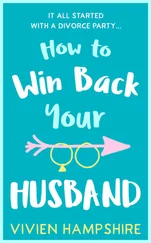About a year ago Richard began searching for a new accounting firm to handle his company's global audit responsibilities. He narrowed his search down to three firms and Sarah's was on his short list of candidates. After a rigorous evaluation process, Richard and his team selected Sarah as their new audit partner.
When we have an existing relationship with someone, and that relationship is characterized by mutual respect and trust, we put ourselves in a stronger position to win the client's business. When we get a call from someone with whom we have an existing relationship, the client's buying decision journey has fewer obstacles. In the absence of these obstacles, our success rate will be higher.
Pathway 4: Inquiries (from Someone You Don't Know)
It's wonderful when we get a call from someone interested in what we do. It's a pleasant surprise when it's from someone we don't know. Our survey data suggests that this pathway represents about 14% of our new clients.
It can be very hard for prospective clients to tell when we're very good at what we do. One of the reasons for this is information asymmetry. Information asymmetry exists when there is a gap – sometimes a large gap – between what you know about your work and what a client knows. Because clients are not often experts at the type of help they need, it's usually difficult to identify the truly talented. Many in our professions may look the part, talk the part, and act the part.
In some professions, there are credentials that serve to indicate that a person is capable of doing the work. Law, accounting, architecture, engineering, and medicine are a few examples. If we're looking to hire an accountant, we wouldn't hire someone without a CPA qualification. Similarly, we wouldn't hire an attorney or doctor who wasn't licensed to practice their work.
In other professions, it's not so easy. Management consulting, IT services, and marketing/advertising, don't have the same standards. Anyone can claim to be a marketing expert or web designer or strategy guru. What clients need are credibility markers. “Credibility markers” is the term that academics have given to things that demonstrate our capability.
Often a prospective client discovers us through things we've done in the past. It could be a recent article you wrote in a trade journal, or a speech you gave at a conference. Perhaps you were highlighted in the news about a recent project, such as a prominent new building on the city's skyline. Or maybe someone discovered you via your website because of a white paper or blog post.
Client work sometimes comes from people reaching out to us as of result of these credibility markers. In the absence of a repeat client, referral, or an inquiry from someone we know, this client pathway is the next leading source of business. The importance of credibility markers leads us to a better understanding of the second rainmaker skill, demonstrating your professional expertise.
Pathway 5: Warm Prospecting (with Someone You Know)
The last three pathways are with people or organizations who haven't sought our help. Therefore, we don't know their level of interest, ability to hire us, or readiness relative to their other priorities.
Pathway 5 is when you explore business opportunities with someone where there is an existing relationship. Maybe it's someone you recently met at a conference, or someone you've known for many years. Our survey data suggests that Pathway 5 represents 11% of new client business – significantly less than referrals and inquiries, but for many professionals an important pathway.
Prospecting is always going to be harder than repeat business, referrals, or an inquiry from someone actively seeking help. There are a host of headwinds we face when we are the one proposing the idea. These headwinds include:
Caveat emptor: Buyer beware; our defenses are up when someone wants to sell us something.
Status quo: Human nature being what it is, staying the current course is often perceived as the safer route.
Buy‐in: Others in the organization aren't on board with us or the idea.
Budget: No funding is available at this time.
Timing: Too many conflicting priorities exist.
Pitching an idea to someone we have a relationship with is going to be easier than pitching an idea to a stranger. When an relationship exists based upon mutual respect and trust, we have already achieved three of the milestones in the client's buying decision journey: awareness, respect, and trust. This is why building your professional ecosystem and developing trust‐based relationships are two of the key rainmaker skills.
Prospecting can lead to new client business. It takes time, and you'll have plenty of swings and misses. Prospecting is not for everyone. But for those who learn the skill, it can be a highly effective pathway to new business.
Pathway 6: Warm Prospecting (with an Introduction from a Mutual Friend)
Pathway 6 is when you're prospecting with someone to whom you've been introduced, and represents 10% of new clients according to our survey data. The prospective client hasn't asked for help, and she may not be actively in the market for your service. But based upon your research, you feel you can help her.
You have a friend or colleague who knows the prospective client, and you've been kindly offered an introduction. Warm introductions are a form of currency shared among friends and colleagues in the business world. And they grease the skids of commerce in a karmic, pay‐it‐forward kind of way.
When appropriately used, warm introductions help break down barriers of human resistance. When we're introduced by a mutual friend, we're much more likely to get to spend some time with a prospective client. For many, accepting a warm introduction is a social courtesy that we extend to a mutual friend.
Mark lives in San Diego and is a senior director for a company that provides services to law, accounting, and financial firms. Mark and I worked together about 20 years ago and have kept in touch over the years as we progressed through our careers.
Mark and his team have been researching Bank of America for several months, and feel they are a good fit. His firm does similar work for several large banks in New York. Over beers one warm evening in La Hoya, Mark asks me, “Do you know anyone at Bank of America?”
I tell him, “Yes, actually, one of my college friends is a senior vice president in their Atlanta office.” And, because I respect and trust Mark, I am happy to provide an introduction.
Six weeks later, Mark and my college friend at Bank of America have dinner together at the Buckhead Diner in Atlanta. Maybe they will end up doing business together, or maybe not. Time will tell. But it would have been much harder for Mark if it weren't for the warm introduction I provided. An introduction from a mutual friend serves as a social bridge between two strangers. This bridge helps to break down barriers that often exist between two people who have never met.
Pathway 7: Cold Prospecting (with No Introduction from a Mutual Friend)
Cold prospecting refers to efforts on your part at meeting someone with whom you would like to do business – without the benefit of an introduction. Cold prospecting represents roughly 12% new client business, according to our survey data.
Many successful rainmakers have built their careers off of cold prospecting. Cold prospecting can work, it's just that it takes longer to build a relationship with someone who doesn't know you and isn't introduced to you.
There are two types of cold prospecting. The first is blind prospecting. Molly from Edward Jones was blind prospecting, knocking on doors without any prior research on the prospect. The better and more effective form of prospecting is what is called targeted prospecting. Targeted prospecting is when you have a very specific target audience and have identified a good candidate based upon extensive market research, as was the case with my friend Mark in the previous story.
Читать дальше












